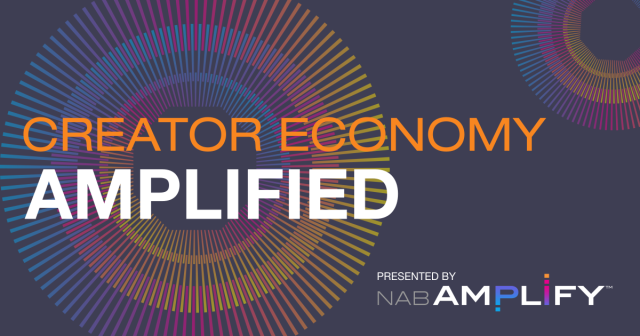
TL;DR
- Tubefilter’s Drew Baldwin, creator economy attorney Tyler Chou, Creator Logic and Partner with Creators founder Avi Gandhi, Changer EVP Renee Teeley, and Jim Louderback, editor and publisher of “Inside the Creator Economy,” discuss “The State of the Creator Economy” at the 2024 NAB Show.
- Up to 200 million people worldwide now identify as creators, with the creator economy’s demographics expanding beyond teens and twenty-somethings to include a diverse array of professionals from various backgrounds.
- Full-time creators — who number roughly 11.6 million in the US — can earn between $150,000 to $180,000 annually, making content creation a viable and lucrative career.
- However, platforms are shifting their focus towards profitability over growth, resulting in even less support for creators, as demonstrated by significant layoffs on YouTube and Instagram’s creative partnership teams.
- While short-form content is a key top-of-funnel strategy, creators are moving away from superficial content towards more engaging and substantial storytelling.
At the 2024 NAB Show, a powerhouse panel of industry pros dissected the ever-evolving creator economy, revealing game-changing insights and forecasting the future for millions of digital creators navigating an ecosystem in flux.
From shifting demographics to the rise of AI, this dynamic discussion was one of the highlights of the all-new Creator Lab at NAB Show, providing a roadmap for creators to thrive amid unprecedented challenges and opportunities.
Titled “The State of the Creator Economy,” the session featured an impressive lineup: Drew Baldwin, founder and CEO of Tubefilter; Tyler Chou, founder and CEO of Tyler Chou Law for Creators; Avi Gandhi, founder of Creator Logic and Partner with Creators; and Renee Teeley, EVP of business development at Changer. Moderated by Jim Louderback, editor and publisher of Inside the Creator Economy, the panel provided a sharp analysis of the current landscape, highlighting key trends, economic insights, and the critical role of technology.

Shifting Demographics
“Up to 200 million people worldwide identify as creators or are part of the creative economy,” Gandhi says, noting that in the US alone estimates range from 27 million to as high as 35% of the population.
However, he explains, what’s more compelling than the sheer size is the diversity within this group. “Years ago, the creative economy was a bunch of teens and twenty-somethings but, today, adults have become creators as well.”
This changing demographic landscape signifies that the creator economy is no longer a niche dominated by young, tech-savvy individuals. Instead, it encompasses a wide range of professionals who bring varied experiences and perspectives, enriching the content creation space.
There are an estimated 11.6 million full-time creators in the US, Louderback notes, underscoring the substantial presence and influence of creators in today’s economy.
Chou described the increasing viability of full-time content creation as a lucrative career. “I’m seeing more and more creators doing their jobs and becoming full time because they can make six figures as creators now,” she says.
Drawing on data from Tubefilter, Baldwin says full-time creators can earn between $150,000 to $180,000 annually. “People are really actually making a living posting on LinkedIn,” he says. “It’s like, you know, six figures, for sure. It’s not playtime anymore.”
Creators must be earning substantial income before transitioning to full-time status, Gandhi adds. “Cost of living is high,” he says, “so naturally the creators that end up quitting their jobs to go full time have to be making a good amount of money.”
The Creator Economy as an Extension of M&E
Platforms are shifting their focus towards profitability over growth, resulting in even less support for creators, Louderback said, pointing to significant layoffs on YouTube and Instagram’s creative partnership teams.
One reason is that tech companies often undervalue the importance of servicing creators. “The creator economy is actually an extension of Media & Entertainment, not an extension of tech,” Gandhi argues.
The COVID pandemic, he says, was the real disruptor, sending Big Tech employees to sit at home scrolling through YouTube and TikTok, where they finally began to understand the opportunities the creator economy presented for VC-backed startups.
“You have all of these companies that are solving problems for creators that have already been solved — how many Patreon clones do we need?” he demands. “How many creator CRMs do we need when every creator that I’ve ever spoken to uses Google Drive?”
Teeley points out the inconsistencies in classification and support for creators. “The US Census Bureau doesn’t actually have a category for creators, but it does have a category for pickled onion manufacturing, canoe repair, roller skate repair, and canary raising,” she says, underscoring the absurdity and lack of recognition for the creator economy.
She also mentions that while platforms like YouTube, Instagram and TikTok are reducing their creator partnership teams, there could be opportunities for other platforms to step up. “I don’t know if Pinterest is on that list, but I think there’s an opportunity for Pinterest to do better with their creator support,” she adds.
Creators, Gandhi says, must diversify their platform presence to survive. “The only way to change is to create enough pain for these companies by going to other platforms.”
Integration of AI in Content Creation
The role of generative AI in content creation was another key topic. Teeley shared her experience, emphasizing its utility in enhancing creativity and efficiency. “One of my favorite ways to use it is actually creative exploration. It can also help me get over creative blocks,” she explained. She described how AI tools can streamline tasks she doesn’t enjoy, allowing her to focus more on the aspects of content creation she is passionate about.
Gandhi predicted a future where “human-made” content will be a mark of quality against AI-generated work. “AI is going to be a distinction over the coming years between, like, AI-made or computer-made and human-made,” he says, drawing a parallel to how “handmade” became a moniker of quality during the industrial age.
Chou echoed this sentiment, underscoring the irreplaceable value of human creativity. “We use it to generate ideas for us, but we don’t use it to write our scripts. I’ve tried it, and it’s terrible,” she says.
Baldwin had a cinematic reference to illustrate the enduring value of human creativity. “I’m thinking about the movie Her, where his job is to handwrite love notes. There’s still so much value in that sort of quaint, little workshop production,” he says.
Teeley adds that there is a middle ground where AI can assist but not entirely take over the creative process. “I think there’s a third category: human-made, AI-generated, but also AI-assisted. Tools that help with storytelling, like Descript, can analyze your video and cut out the fluff, enhancing the storytelling.”
Regulatory Concerns and Platform Reliance
The potential ban or sale of TikTok due to political tensions was a significant point of discussion. Baldwin and Teeley both emphasized the importance of creators diversifying their platform presence to mitigate risks associated with platform reliance.
“I wouldn’t slow down on TikTok, but I would recommend the same thing that I always recommend, which is multi-platform,” Teeley said. She stressed the importance of having a home base that creators control, such as a personal website or a service like Kajabi or YouScreen, to ensure a direct connection with their audience.
Chou reinforced this strategy, noting the potential benefits of building a community off-platform. “YouTube is not your business; you’re the business. YouTube is the marketing arm of your business. So please make sure you have your own email list, your own website, create a community off-platform,” she advises, urging creators not to build their business on land they don’t own.
Content Trends and Storytelling
The creator economy has experienced a noticeable shift toward what the panelists called more meaningful and storytelling-focused content. As audience preferences evolve, they agreed, creators must focus on producing meaningful, engaging content that resonates on a deeper level.
Short-form content remains a top-of-funnel strategy, Louderback acknowledges, but long-form content remains crucial for building strong audience relationships.
“Shorts are a great top-of-funnel, but most creators don’t actually have a funnel at all,” says Gandhi, emphasizing the need for creators to employ a comprehensive content strategy.
“It’s all about the audience,” he insists. “Whatever type of creator you are, the content that you make needs to fit what your audience wants.”
Teeley appreciates the decline of certain types of content, such as the ubiquitous challenge videos that quickly oversaturated social media platforms. “I like that we’re seeing more storytelling coming back,” she said, stressing that successful content still needs to hook and captivate the audience, regardless of its format.
Baldwin added that viewers are increasingly looking for content with higher value propositions. “Coming out of COVID, sensational extreme challenge videos were stimulating and exciting. Now, we’re ready for something else,” he observed. He also noted a shift towards content that offers more substantial engagement and relatability, reflecting a broader trend of audience fatigue with superficial content.
Emphasizing the growing recognition among creators that storytelling is key to forging deeper connections with their audience, Chou asks, “If you ask any creator now, what is the one thing that they tell themselves to do every day? It’s to write for an hour.”
Watch the full conversation below.

Why subscribe to The Angle?
Exclusive Insights: Get editorial roundups of the cutting-edge content that matters most.
Behind-the-Scenes Access: Peek behind the curtain with in-depth Q&As featuring industry experts and thought leaders.
Unparalleled Access: NAB Amplify is your digital hub for technology, trends, and insights unavailable anywhere else.
Join a community of professionals who are as passionate about the future of film, television, and digital storytelling as you are. Subscribe to The Angle today!


